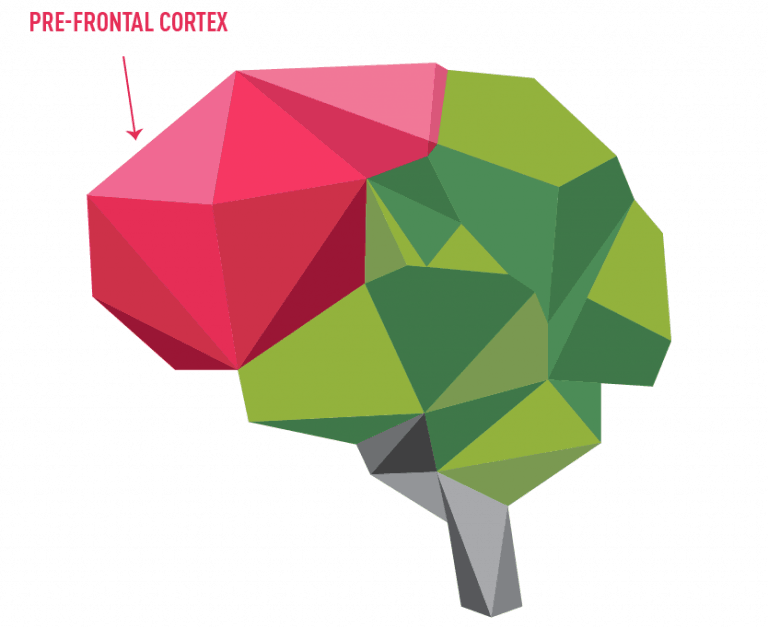Learning Brain Busters Part I: Strengthen The Thinker

“Mom! I just don’t get it!” “I am so tired.” “Do I have to?” “This is stupid!”
All too often these are common phrases that disrupt our homeschool week. We try so hard to get things done, to make things interesting and to keep it all together, but sometimes the kids are just not on the same page. Whether they are frustrated, bored, overwhelmed or just feeling antsy, their frustration often causes us to question whether we can really do this thing called homeschooling.
Believe it or not, these struggles are often a result of what we can literally identify as brain drain. And that is the topic of Part I of this series— Strengthen the Thinker.
How does brain drain occur?
I think we can all agree that the brain is incredibly powerful. Designed with approximately 100 billion neurons that each have about 10,000 connections to their neighbors, the brain is responsible for keeping us alive.1 In this article, we will focus on one very small part of the brain—the Prefrontal Cortex (The Thinker). It is here in the The Thinker that brain drain takes root.
Prefrontal Cortex - The Thinker
The Thinker is responsible for the majority of conscious thought. Here is where we think, plan, set goals, control impulses, solve problems, think creatively, make decisions, recall prior information, process new information … you get the picture.
Without The Thinker you would not be reading this article today. Why? Because to get to this blog site, “Your Thinker” needed to make a plan, then determine where to click, what to type, and decide what blog posts were worth reading. Next, this powerhouse cortex helped you to control the impulse to click that appealing description that popped up on your screen, and it provided the know-how to navigate the site once you arrived. And all of this happened in just seconds.
But it did not happen without energy.
You see, one of the challenges of The Thinker is its extraordinary need for energy. Every time we make a decision, take in new information, engage in problem solving or complete a task involving conscious thought, we use up energy. And that energy is a limited resource. In other words, it runs out and does not recharge on its own.
Believe it or not, the brain uses up more than 20 percent of our body’s total energy. This is why we feel more exhausted after a long day at the books or in front of the computer than we do after spending the day engaged in some kind of physical exercise.
This is brain drain.
And that Prefrontal Cortex brain drain often results in mental exhaustion which leads to the inability to think logically or control emotions during stressful situations.
Let’s consider this in the context of teaching and learning.
Every time our kids learn a new concept, practice skills they are still developing or think critically in order to solve a problem, they use up valuable energy. And because they are using up energy, each new challenge makes the next one more difficult.
Our job is not only to teach and inspire but to find a way to organize our day and present information in a way that creates an atmosphere of success, an atmosphere that protects against brain drain.
Learning to Preserve Working Memory: 4 Ways to Set Students Up to Succeed

1. First thing first.
Do you tend to organize your day by starting with what is easy and building up to the most difficult subjects or do you tackle the tough subjects first? Knowing that the brain is an energy sapping resource, we can set our kids up for success by prioritizing the tough subjects first thing in the morning (or right after exercise) when their brain is most fueled and ready.
2. Schedule Breaks Throughout the Day.
One incredibly powerful tool for recharging the brain is exercise. In fact, every time you get up and move your spine, you send electrical charges to the brain that regenerate its ability to think and learn. Scheduling regular breaks, getting deliberate about exercise before tackling those difficult subjects, and ensuring your kids have plenty of time to get up and move is just one step in creating an environment of success. Need more suggestions for breaks? Check out these fun ideas!
3. Paint a Picture.
No matter the learning style, our brains process visuals 60,000 times faster than text or speech. What’s more, studies show that visuals improve learning by up to 400 percent. This means we can improve both our kids’ ability to process information and their ability to transfer information to memory by using pictures, charts, graphs and other visual cues. Add visual learning to your homeschool with some of these tips!
4. Create Patterns.
Although many believe they are excellent multitaskers, the brain only engages in one thinking rich activity at a time. So unless we are able to go on autopilot in one area, we cannot efficiently multitask. This is why creating patterns or developing habits that help a specific skill become second nature is so important.. Memorizing multiplication tables, using mnemonic devices to reinforce memory, and practicing skills repeatedly transfers those skills and information into the Basal Ganglia for easy recall . This means our kids can focus their precious energy on more complex problem solving.
Learning to preserve working memory—The Thinker—is just one way to leverage the way the brain works best. When we understand God’s incredible design we become better teachers, better parents, better learners. And when we can use that understanding to inspire our kids, we open the doors wide for them to succeed. So take some breaks today, reorganize if you need to and find a way to show rather than tell!
And don’t be surprised when “I don’t get it,” “Do I have to?” and “This is so stupid” become “I totally get it!”, “That was fun!” and “What’s next?”
You will be amazed at the difference! But be aware there is another part of the brain waiting to sabotage all your hard work. Our next post in this Learning Brain Busters series provides a critical role in your ability as a homeschooling parent teacher to overcome this threat to your child’s learning. Don’t miss it by subscribing now.
Read Part II: Dampen The Reactor
Sources:
- Computational Explorations in Cognitive Science; Understanding the Mind by Stimulating the Brain Randall C. O’Reilly and Yuko Munakata, A Bradford Book MIT Press Cambridge Massachusetts, London, England, 2000, pg. 15.







I'm going to do my best to apply this to my adhd son... I'm not convinced his brain gets tired, though. Ever..